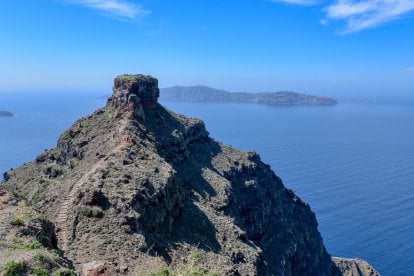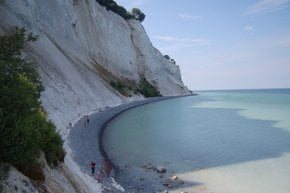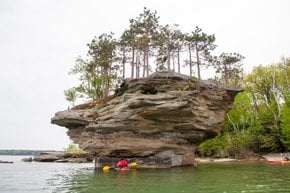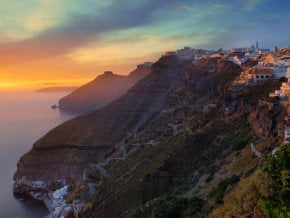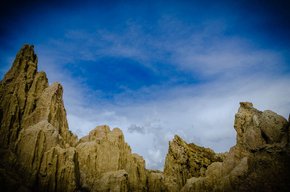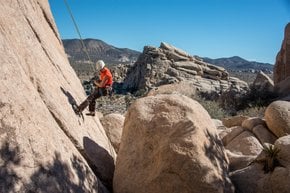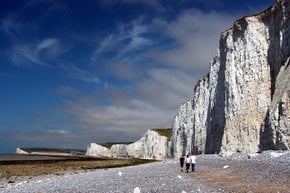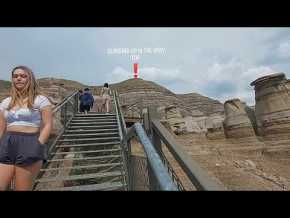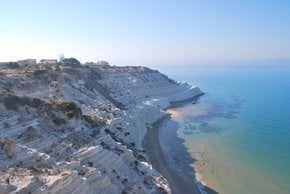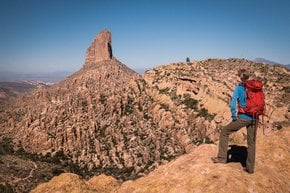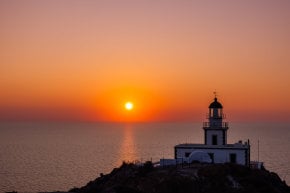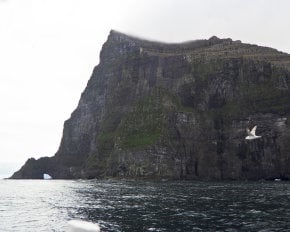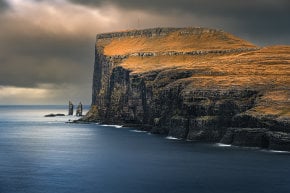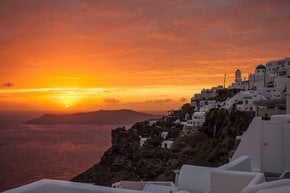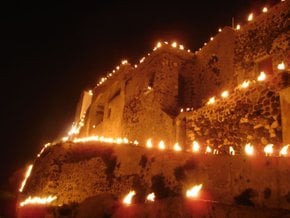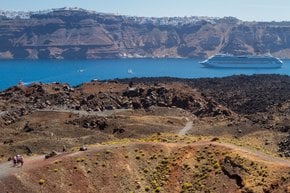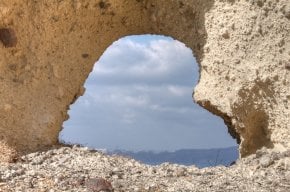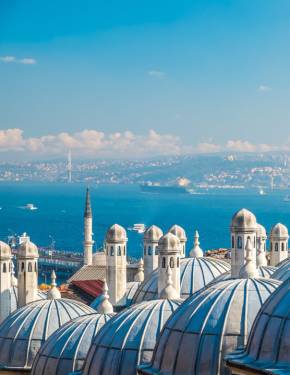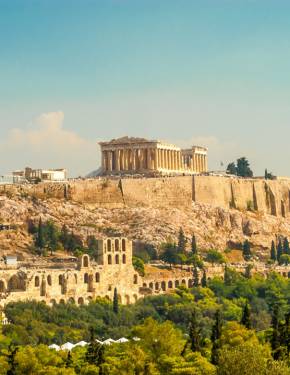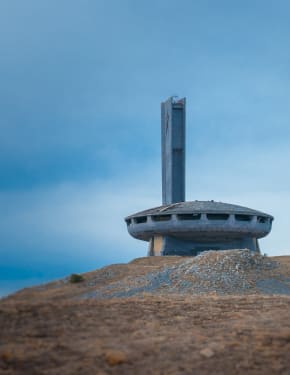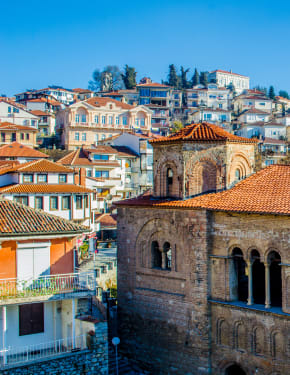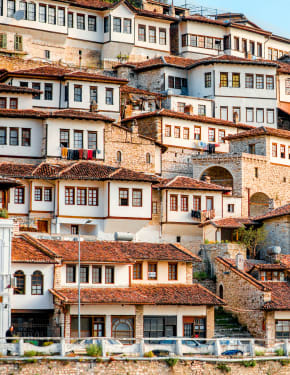Skaros Rock in Santorini 2025-2026
Ancient fortresses, dramatic cliffs, and sweeping caldera views tell the timeless story of Santorini
Best time: Year-round
Skaros Rock, located in the picturesque village of Imerovigli, is a striking headland that juts into the azure waters of the Aegean Sea. This natural formation not only offers breathtaking views but also serves as a significant historical site, once home to a grand fortress that was the center of Santorini’s early Christian community.
What to See and Do at Skaros Rock
Visitors to Skaros Rock can engage in several activities that highlight the area’s natural beauty and historical significance. The most popular option is hiking, with trails that lead to stunning viewpoints overlooking the caldera and surrounding islands. The well-defined path from Agios Georgios Church allows for a relatively easy hike that rewards trekkers with panoramic views of the Aegean Sea. As visitors explore the area, they can also capture the charm of the ruins that remain from the once majestic fortress. The scenic beauty attracts many couples for wedding ceremonies or romantic getaways, thanks to the enchanting backdrop of the caldera.
Hiking to Skaros Rock
The hike to Skaros Rock, starting from Agios Georgios Church, is a rewarding experience that covers approximately half a mile (650 m) to Theoskepasti Chapel or the summit of Skaros Rock. With a duration of about 45 minutes to 1 hour round trip, hikers will encounter a descent of approximately 197 feet (60 m) to the rock base and an additional 230 feet (70 m) down to the chapel. Rated as easy to moderate, the trail features around 280 stairs to the rock's base and another 200 to reach the chapel. Though well-marked and straightforward, portions of the ascent can be slightly technical, especially near the summit.
Hours of Operation and Schedule
Skaros Rock is accessible year-round, with no specific hours of operation. However, visitors are advised to plan their hikes during daylight hours for safety reasons. The best time to visit is during the spring and fall months, as summer temperatures can be quite high. The hiking route is open to all who wish to explore this iconic landmark.
Location and Infrastructure: Getting to Skaros Rock
Skaros Rock is conveniently situated between the towns of Fira and Oia, directly across from Agios Georgios Church in Imerovigli. Various transportation options are available for reaching this destination, including private transfers, car rentals, and public transport. Pre-booking a transfer service is recommended, with options such as taxis, minibusses, or private VIP car services that can pick visitors up directly from their hotel. Visitors can also rent a car to explore the island, with the convenience of picking up the vehicle at their hotel.
Imerovigli is the fourth stop on the bus route from Fira to Oia. Once in Imerovigli, Skaros Rock is about a 15-minute walk away. The central bus station in Fira offers connections to various parts of the island, with buses to Oia departing approximately every hour. Visitors are advised to inform bus drivers of their final destination, as the buses may not stop at every scheduled location.
Nearby Attractions
The area surrounding Skaros Rock is rich in attractions and amenities. Visitors can enjoy a variety of dining options at nearby restaurants, such as Anogi and Avocado, which offer delicious local cuisine. For a relaxing drink, bars like The Wine Bar provide a cozy atmosphere with stunning views. Accommodation options are plentiful, with luxurious hotels like Grace Hotel Santorini and Astra Suites offering breathtaking vistas and top-notch service. Additionally, the stunning landscapes and scenic views make it an ideal setting for romantic getaways or leisurely exploration. Don’t miss the chance to visit the nearby Agios Georgios Chapel or take a scenic walk along the caldera edge for unforgettable photo opportunities.
Historical Significance
Skaros Rock, an iconic natural formation in Santorini, boasts a rich history that dates back to medieval times. Initially established as a Byzantine fortress known as Epano Kastro (Upper Castle) or La Roka, it was constructed by the Venetian Giacomo Barozzi after he was granted the island by the Duke of Naxos, Marco Sanudo, in 1207. Skaros was one of five fortified settlements on the island and served as a critical defensive stronghold against pirate raids, housing a densely populated Catholic community known as the Kasteli of Skaros, which included 200 houses. A prominent bell hung at the top of the rock to alert inhabitants of incoming threats.
Despite its strategic importance, the promontory endured a series of devastating earthquakes during the eruptions of 1650, 1701 to 1711, and 1866 to 1870, leading to the evacuation of its residents. By the 18th century, Fira became the new capital due to better access to the sea, although sketches from 1770 indicate that houses still existed on Skaros. By the time of Ludwig Ross’s visit in 1836, the settlement had been abandoned for years, and today, the only remnant of its vibrant past is the Chapel of Agios Ioannis Apokefalistheis and the ruins scattered throughout the area.
Tips for Hiking
Before embarking on your hike, it is essential to take some precautions. Start early or late to avoid the midday heat, and ensure you carry plenty of water, as the trail can be steep and challenging on the return trip. Wear proper footwear for better grip on loose rocks, and pack light with just the essentials, including sun protection and a camera for stunning views. Be mindful of unstable rocks, as recent erosion has affected the trail, and always hike at your own risk.

